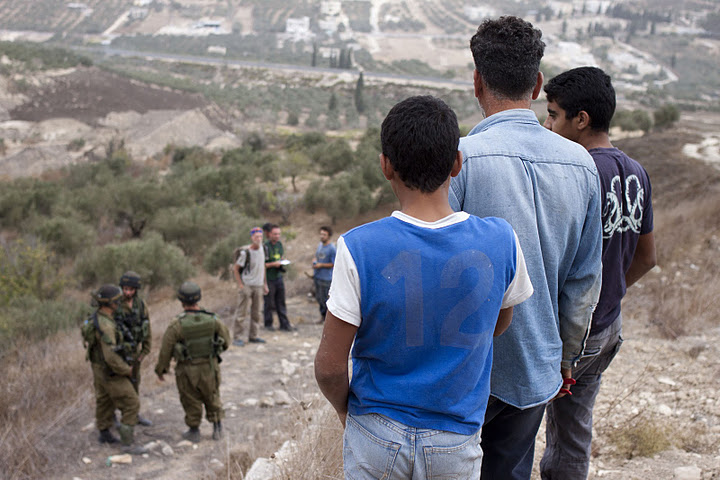Month: October 2011
-
Israeli prison industrial complex in motion
by Lisa 30 October 2011 | International Solidarity Movement West Bank During a settler tour around the old city in Hebron on Saturday, where dozens of Israelis were guided around in a sort of parade, a Palestinian man named Yousef Salim Issa Al Batch, passed by and was stopped by Israeli police. He had a…
-
Beit Ummar: Settlers throw stones from behind military tear gas
by Anders and Aurelie 30 October 2011 | International Solidarity Movement, 2011 What started as a peaceful demonstration soon erupted into violence when soldiers and settlers from Karmei Tzur settlement attacked a demonstration in Beit Ummar today. The demonstration of around 30 Palestinians and internationals started from the outskirts of the village and continued through a…
-
Refusing to die in silence: Palestinians resist settler violence during the olive harvest
Ben Lorber 29 October 2011 | Mondoweiss As this year’s olive harvest sends Palestinian families across all of historic Palestine out to their olive trees, a new nonviolent resistance group called Refusing to Die In Silence is patrolling the West Bank, protecting harvesters from increased settler violence. The 2011 olive harvest, which began in early…


